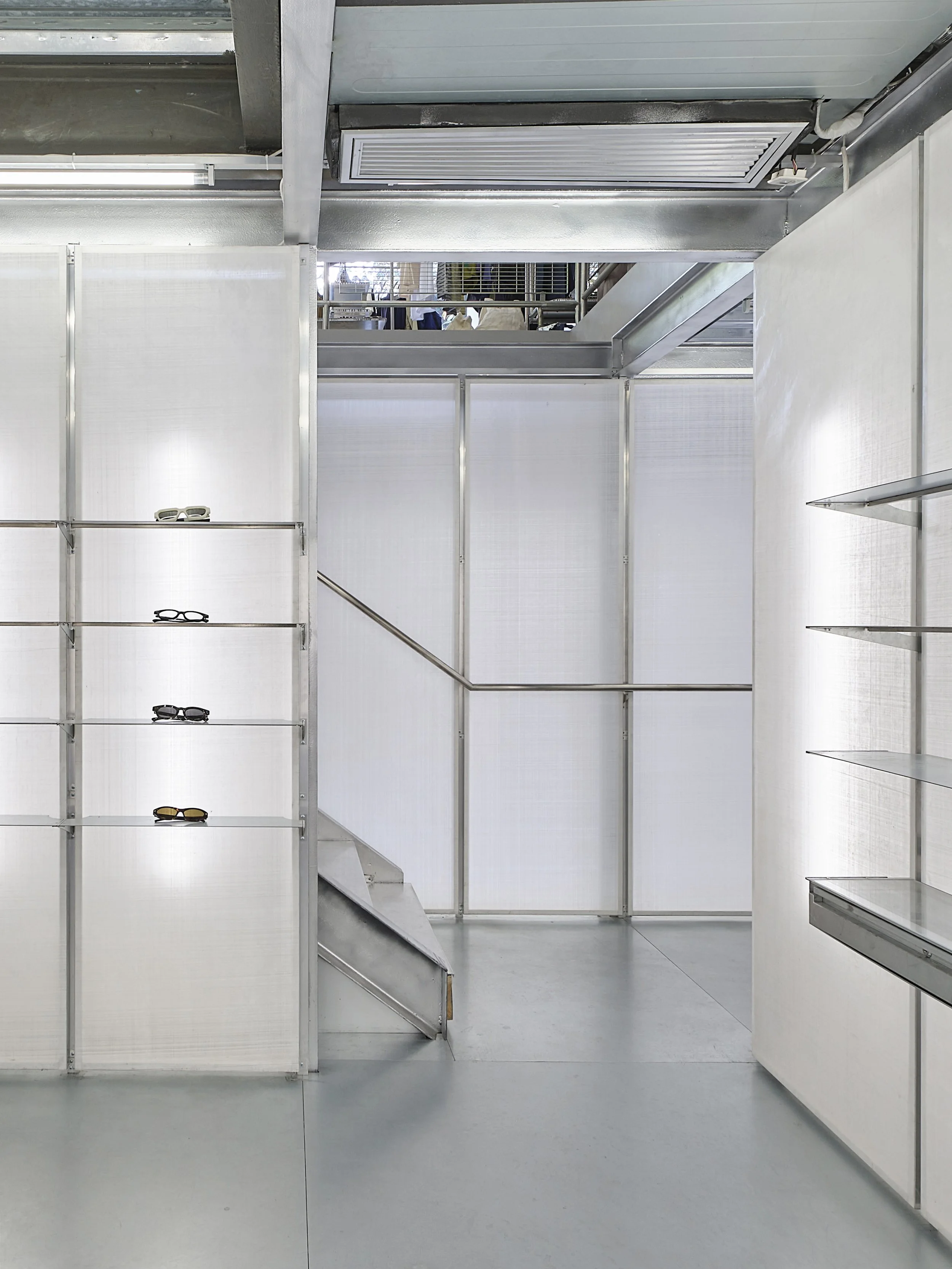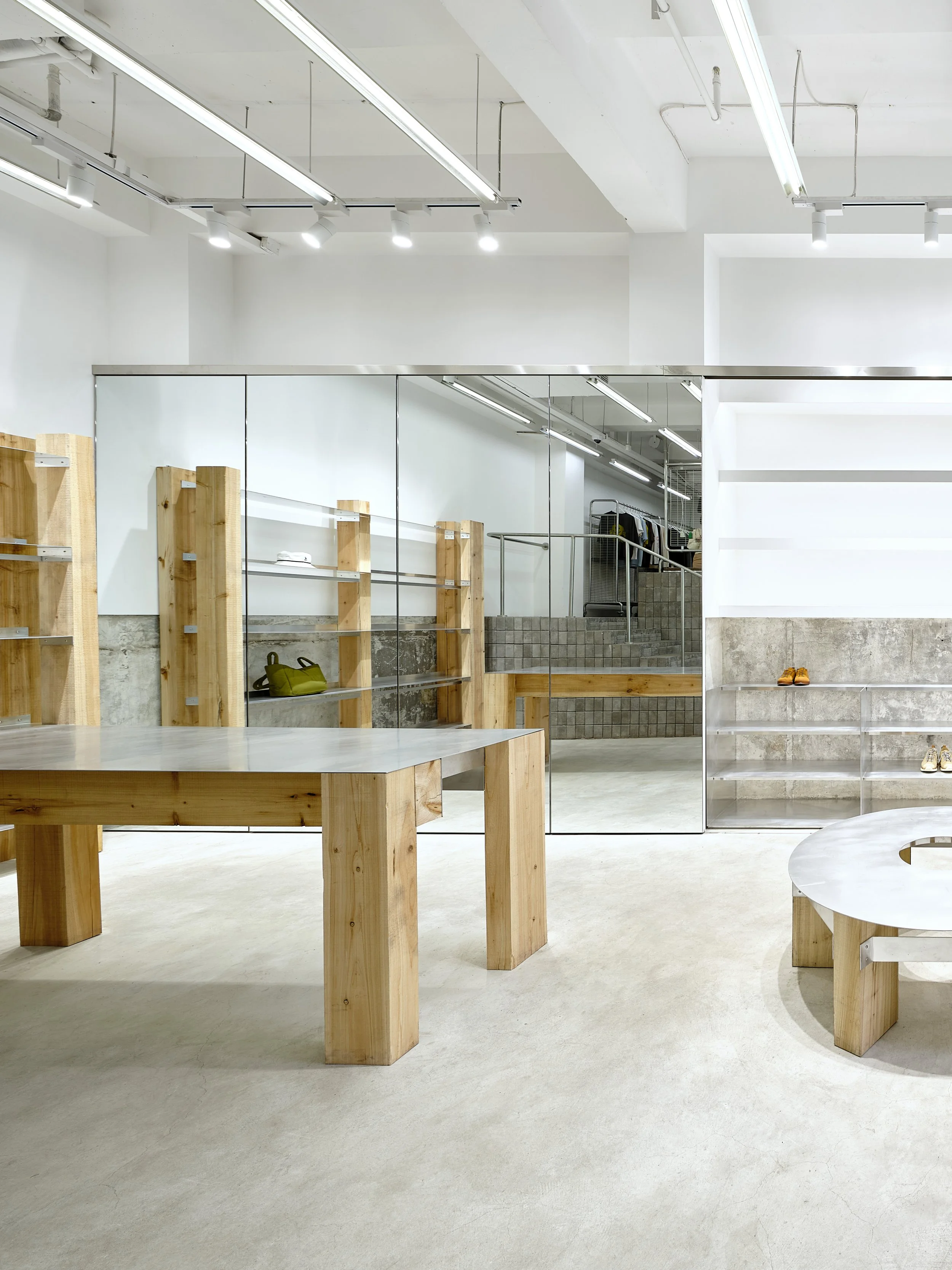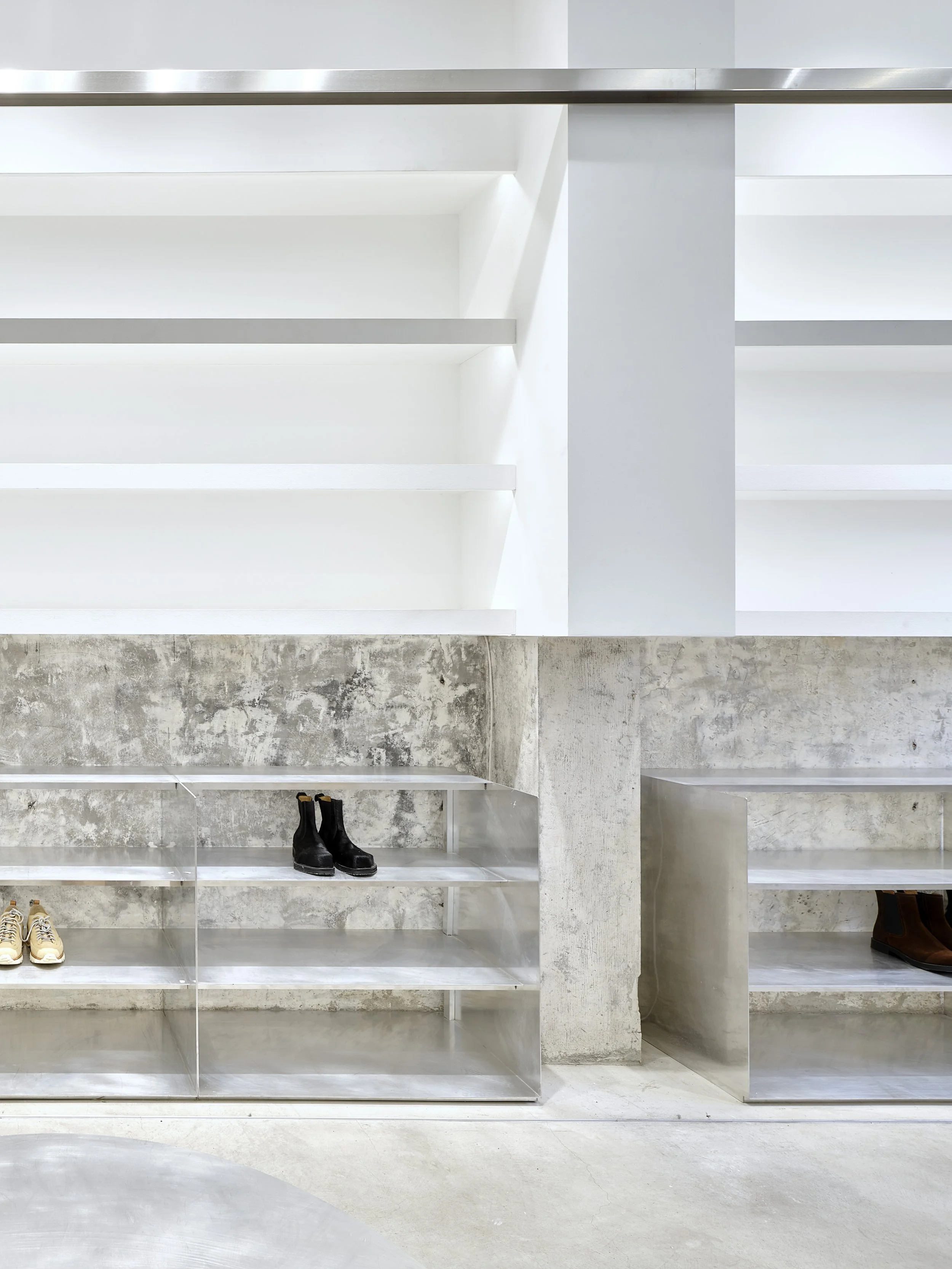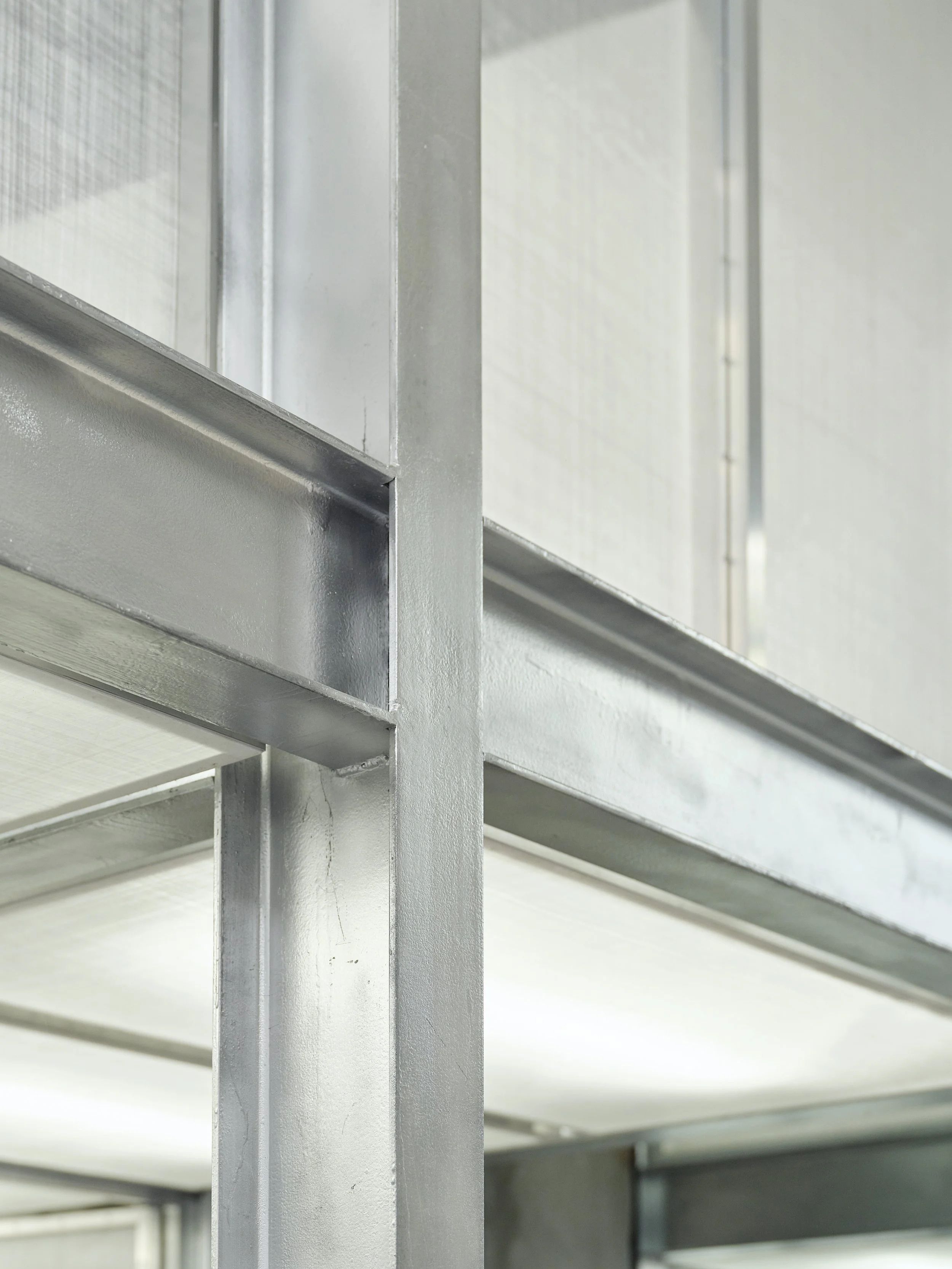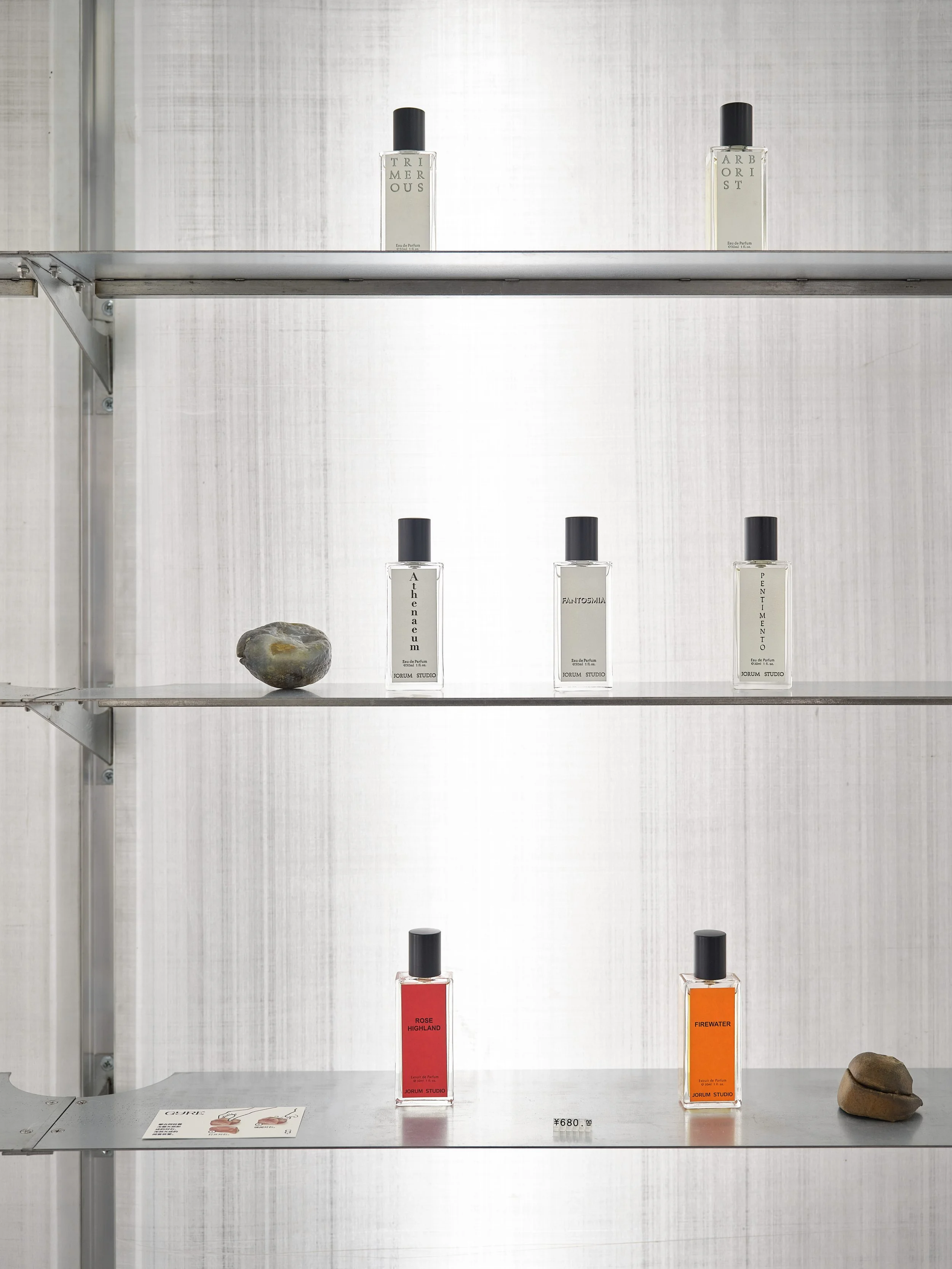IN THE PARK MALL
IN THE PARK MALL
The updated store for In the Park Mall, Shanghai required a remodelling of the post-industrial site’s interior. All fittings and finishes were stripped back to the building’s structural shell and a series of objects were installed to support the store’s function. These objects, crafted from raw aluminium and 200 x 100mm timber, range in scale from a large 5 x 4 metre light box to a series of tables and a stool and serve as the only devices to organise the space. These props are ambiguous, and are each an inquiry into the notion of completeness. How do we perceive something as complete? We wait for architecture to be sealed, the gaps covered up.
In the art world, any posting for sale of an antique painting will contain a high-resolution photograph of the back of the canvas to validate authenticity, as the materials, construction methods, and patina provide information about the origin and age of the item for sale. The back of the canvas has tangible value; a normally hidden yet crucial part of the artwork.
The same could be thought of architecture, to validate the age of a building we often peer inside walls and attics. The meat and bones of architecture are the parts usually preferred to be invisible. The parts of architecture we typically give value to are paper-thin interior surfaces.
The aim for TOA in designing Park Mall was to flip this front/back relationship inside out, using raw, architectural-scale materials to develop a design language that plays on the kind of brutal pragmatism normally reserved for the spaces we don’t see.






